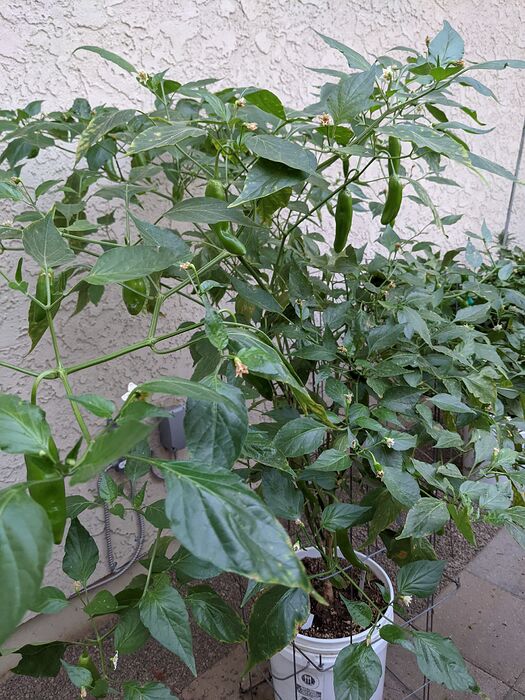Shrinkrap, those recipes are definitely NOT Peruvian! Those are what appear to be American recipes. Mayo? Catsup? I had a lot of Aji sauce in various parts of Peru and these other ingredients were not in the sauce. Sliced, boiled egg might be covered with the sauce. Catsup is absurd as it’d add sugar and competing flavors.
It might taste good, but it is not Peruvian.
Aside from just the pureed Aji (Aji paste), the various sauces called “Huancaina” are more simple. These are the primary sauces served in Peru. I can hear my son, who grew up in Peru and is a bit of a minimalist/traditionalist, shriek in horror at the notion of adding mayo or catsup! Often, if the sauce is too runny, saltines may be added to thicken. Garlic, and or onion may appear. Queso Fresco is commonly listed as a substitute to a similar Peruvian fresh cheese. I’ve seen small amounts of feta added to the queso fresco to approximate the slightly stronger flavor of the Peruvian cheese.
Gaston Acurio wrote an excellent cookbook: “Peru the Cookbook”. That’s worth getting if you love Peruvian cuisine. He mentions two, different Huancaina sauces:
Huancaina a la Antigua-Old-fashioned and Huancaina Actual-Huancaina sauce. Here are some of his recipes, with some notes added from experience:
Old-fashioned
Aji peppers seeded, cored 13 oz. (375g)
vegetable oil 1/3 cup (75ml)
queso fresco 7 oz. (200g)
evaporated milk 14 fl. oz. (410 ml)
Saltine crackers about 1
salt 1 1/2 teaspoon
Since the Aji can be more or less hot and vary in moisture content, I don’t add the milk. Fresh Aji are moist enough and it’s optional. In Peru, some folks use a batan,. Try getting one of those shipped! A blender or processor works fine.
I also don’t add salt. To my taste, the cheeses add enough. This sauce freezes very well, whereas the following can get funkier in the freezer as garlic and onions don’t age well frozen for longer periods.
Huancaina Actual
Vegetable oil 1/4 cup (75 ml)
Aji amarillo 9 oz. (250g)
Red onion, 1/4 *Peruvian red onions are typically milder than the ones found in the US. Use less or maybe a sweet onion instead. Also onions vary a lot in size. I’d figure about 2-3 Tablespoons, finely chopped, would be plenty.
Garlic 2 Cloves * again, adjust for size.
Evaporated milk 1 3/4 cup (400 ml) *Don’t add it all! Might be too runny. Add towards the end of blending/processing.
Queso Fresco 4 1/2 oz. (130g)
Saltine Crackers about 4
The most common basic Aji “Aji Amarillo Licuado” is just peppers blended with a little oil.
Another recipe for Pasta de Aji Amarillo, Yellow Chili Paste, cooks the seeded chiles. For 2 1/2 lbs (1 kg) peppers:
“Place the chiles in a pan with enough cold water to cover and bring to a boil, then remove from heat and drain. Repeat the process 3 time, changing the water each time.”
Then, the Aji is blended with just a Tablespoon (15 ml) of oil.
When folks talk about the Scoville or heat level in peppers, it is based on the whole fruit/pod, core, seeds and all. Most of the heat in Aji is in the core. I save a few de-seeded cores to add at the end if the sauces are too mild. For parties, I keep the sauce milder.
Contrary to popular myth, Peruvian ceviche dishes don’t usually contain Aji Amarillo, but I have seen it once in awhile. More commonly, Aji Limo* is used, a fiery C. chinense which is commonly red, very shiny and lacks the “goaty” aromas one finds in Habaneros and Scotch bonnets. Rocoto is also frequently used. My first encounter with Rocoto (C. pubescens) was in Lima, a half served in ceviche. As soon as I popped that into my mouth, thinking it was a pimiento, my brother in law said “Este es Rocoto!” That’s a Rocoto! About then, my mouth lit up.
- As mentioned above, Aji Limo is NOT Lemon Drop or C. baccatum ( a yellow, smaller, hotter relative of Aji Amarillo). Wm. Woys Weaver wrote an incorrect article that resulted in great confusion by misnaming Lemon Drop as Aji Limo. The web is now full of errors regarding this.
This is Aji Limo, red form:
Back to Aji amarillo: I am curious how cooking or blanching effects the flavor. The fresh, uncooked puree is so good, it’d be a shame to lose some of the fruitiness. Guess that’s why I haven’t done it yet. Maybe if a mother load comes in, it’ll get me to experiment more. Speaking of which: I had to find a small, forked tree and cut it into a support “Y” for one of the plants bending under the weight of peppers! It was pulling the 3+ inch diameter bamboo stakes over. Hadn’t seen that before.



















